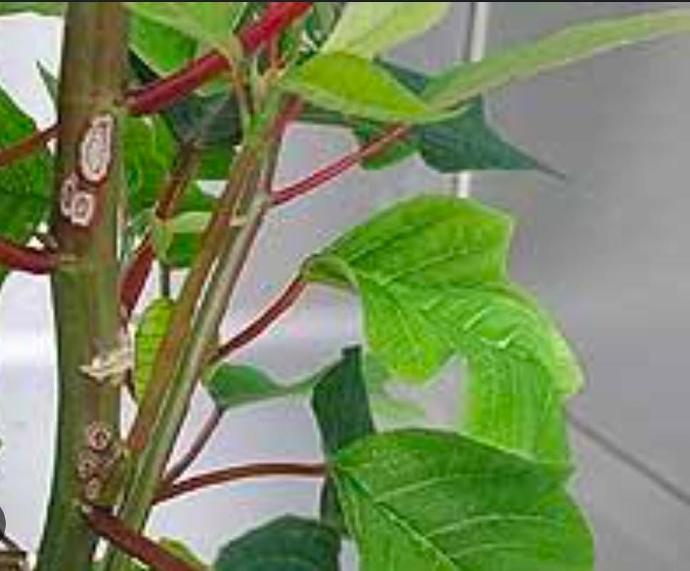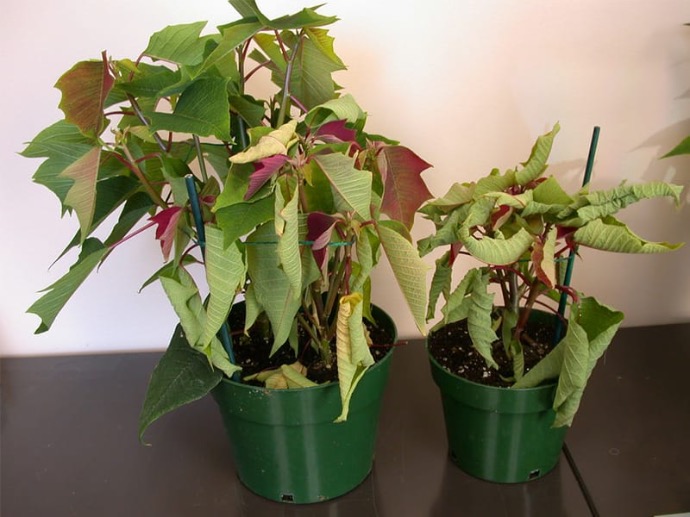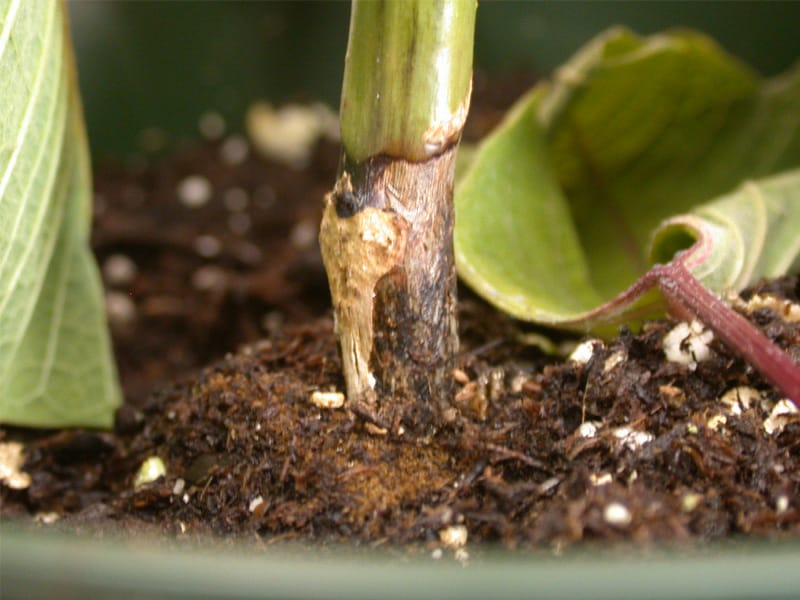Poinsettia Plant
Poinsettia, also known as Euphorbia pulcherrima, is an indoor plant with vibrant bracts. Plant in well-draining soil and provide bright, indirect light. Water consistently and avoid overwatering. Pruning helps maintain a compact shape. Fertilize during the growing season..
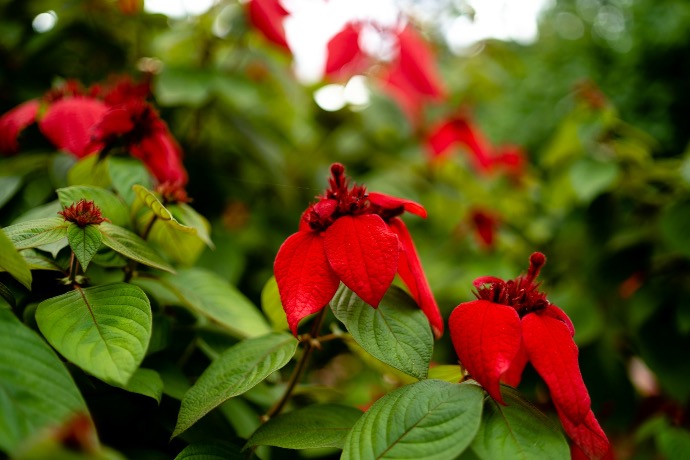
Habit
Perennial
Height
0.5 to 1.0 m
Growth
Fast
Soil
Well-drained, Loamy
Shade
Full Sun to partial shade
Moisture
moist
Edible
no
Medicinal
no
Origin
Mexico, Central America
Climatic Condition
Tropical, Subtropical
Temperature (°)
20°C to 25°C
Humidity (%)
60% to 70%
Potting media
50% Loam, 40% Sand, 10% Compost
Fertilizers
Organic Fertilizer
Watering
Regular watering
Plant Weight
0.2 to 0.5 kg
Flowering Time
Winter to Spring
Soil Ph level
6.0 to 7.5
Water Ph level
6.0 to 7.0
Soil EC
0.5 to 0.7 mS/cm
Yield Per Plant
Ornamental
NPK ratio
10:10:10
life Span
3 to 5 years
Health Benefits
Ornamental, Medicinal
Suggested Grow Media or Potting Mix ?
50% peat moss, 30% perlite, 20% compost
Suggested Fertigation/Fertilizers
Fertilize every 4 weeks with a balanced, water-soluble fertilizer.
Common Diseases and Remedies
Rhizoctonia stem ,Pythium root rots, bacterial soft rot .
Brown lesions on leaf, stem, and floral tissues which are characterized by the grey, fuzzy growth of the fungus on the affected tissues. Infection and initial disease development occurs on tender new growth or on wounded, weakened, or dead tissues .
remove and destroy affected plants, isolate suspect plants, verify type of root .
HEALTH BENEFITS
· Traditionally used for pain relief in folk medicine.
· Contains compounds that have mild antimicrobial properties.
· Used in some cultures for treating respiratory issues.
What Is A Poinsettia Plant?
Poinsettia is a flowering plant that belongs to the Euphorbiaceae family (Euphorbiaceae). It is native to Mexico and Central America, where it grows in moist, moist forested valleys and rocky slopes.
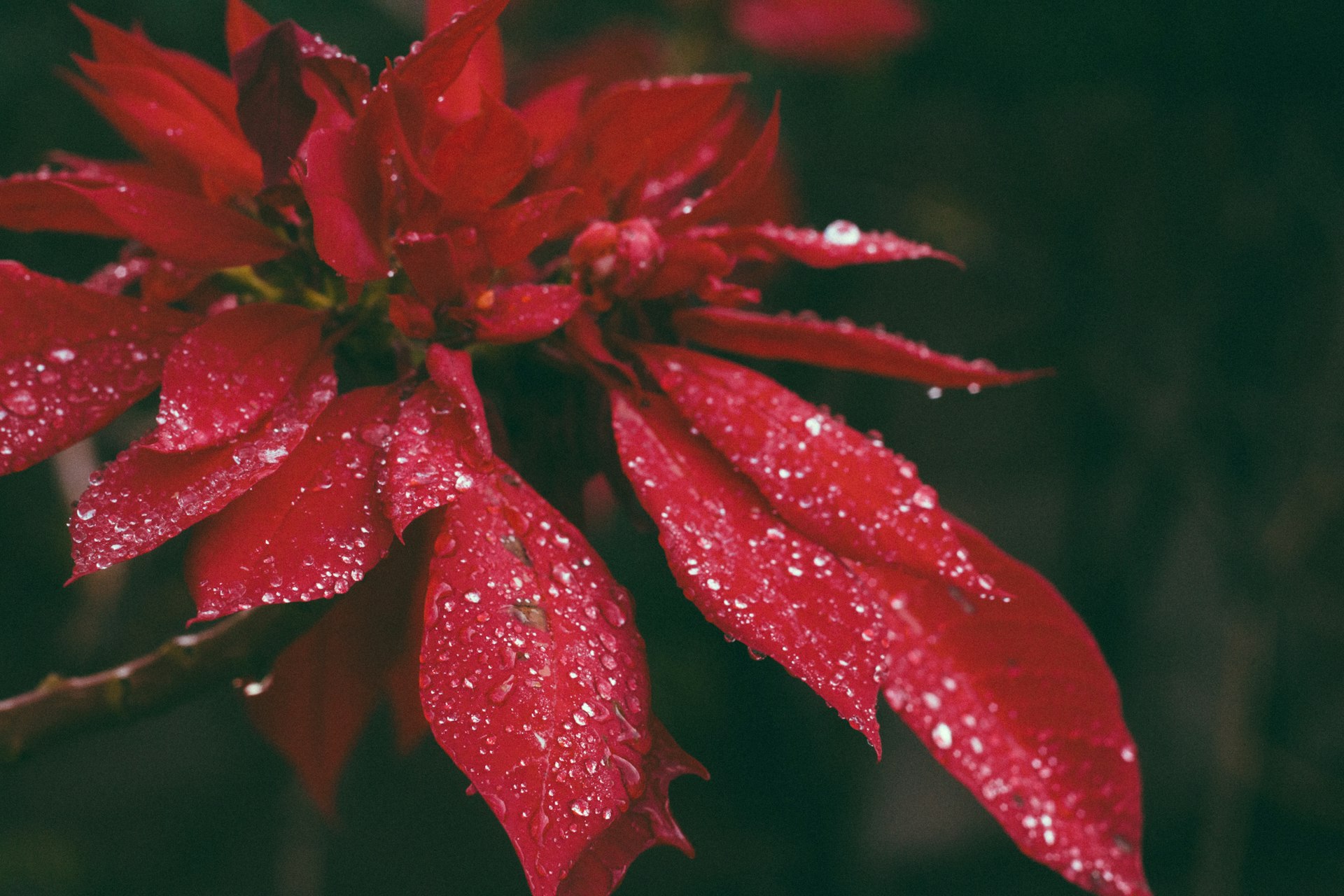
What Are The Different types of poinsettia?
1.Prestige Red:-
A classic red variety.
2.Jingle Bells:-
A variety with red bracts with soft pink or white spots.
3.Winter Rose Early Red:-
A variety with small curled dark red bracts that resemble rose petals.
4. Plum Pudding:-
A variety with purple bracts.
5.Jingle Poinsettia:-
A variety with white or cream-colored spots or spots on the bracts of one color, such as red or pink.

How do you care for poinsettias?
1.Location:-
Near the window. Place your poinsettia near a window that receives plenty of bright but diffused or indirect light.
2.Sunshine:-
Place your poinsettia in a bright, indirect location. You can also mist the leaves and bracts to increase humidity and keep the bracts looking nice.
3.Soil:-
Poinsettias should be planted in well-drained potting soil. Prefers moderately moist soil, so avoid leaving the plant in standing water.
4.Hydration:-
Poinsettias should be watered at least once a week in summer, more often if it is very hot and dry.

5.Nourishment:-
Feed your poinsettia once a month during the spring with a balanced, water-soluble houseplant fertilizer.
6.Issues:-
The main disease problems of poinsettia can be divided into those that occur during propagation and those that occur during grafting or on mature plants (Pythium root rot, Botrytis leaves, stems).
What are the benefits of the poinsettia plant?
It is often used as a Christmas decoration. The whole poinsettia plant and its sap (latex) were used to make medicine. The chemicals in dry juice can help relieve pain. People use poinsettias to treat fever, pain, and other illnesses, but there is not enough scientific evidence to support this use.
 FAQ's About Growing Poinsettia
FAQ's About Growing Poinsettia
1. How do you care for poinsettias?
When repotting poinsettias, you can use a mixture of 1/2 succulent/cactus mix and 1/2 potting soil.
2. When do poinsettias bloom?
Poinsettias are known as ``short-day plants'' because they bloom as the days get shorter from late fall to early winter. It requires both sunlight and dark nights to bloom, and planting near artificial light can disrupt the flowering cycle.
3. What does a poinsettia look like?
The colorful parts of a poinsettia are actually modified leaves called bracts, which are colored red to attract insects for pollination. Small flowers do not have real petals.
4. How do poinsettias grow?
Poinsettia grows best in moist soil and temperatures between 65 and 70 degrees Fahrenheit. It can be grown outdoors in the summer, but should not be kept at temperatures below 50 °F (12 °C) day or night.
5. How to choose poinsettias?
When choosing a poinsettia, you can consider the following: Choose plants whose leaves are dark green to the soil border. Select fully colored bracts. Do not buy poinsettias that have a lot of green at the ends of the bracts.
